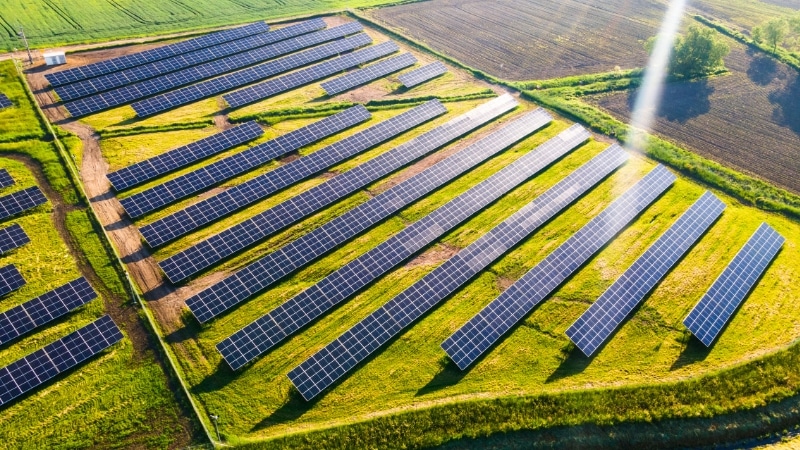The world is witnessing significant renewable energy technology advances that are revolutionizing how we produce and consume energy. As the global community seeks to combat climate change and reduce reliance on fossil fuels, these technological innovations are pivotal. This article explores the latest advancements in renewable energy technology, their impact, and what the future holds.
Renewable energy has moved from a niche sector to a mainstream energy source. The continuous improvement in technology is making renewable energy more efficient, affordable, and accessible. These advances are not only helping to meet the growing energy demands but also playing a crucial role in reducing greenhouse gas emissions.
Solar Energy Innovations

High-Efficiency Solar Panels
One of the most significant renewable energy technology advances in solar power is the development of high-efficiency solar panels. Modern panels now convert more sunlight into electricity, thanks to materials like perovskite and advanced photovoltaic (PV) cell designs. These materials and designs have pushed efficiency rates over 25%, reducing the cost per watt of solar energy.
Bifacial Solar Panels
Bifacial solar panels capture sunlight from both sides, increasing energy output. These panels can produce up to 30% more energy than traditional single-sided panels. They are particularly effective in areas with reflective surfaces like snow or sand, which can bounce sunlight onto the rear side of the panels.
Solar Skin and Building-Integrated Photovoltaics (BIPV)
Solar skin technology and BIPV integrate solar panels into building materials, such as roof shingles and facades. This integration allows buildings to generate electricity without traditional solar panel installations, enhancing aesthetic appeal and reducing space requirements.
Wind Energy Breakthroughs
Offshore Wind Farms
Offshore wind farms are among the most promising renewable energy technology advances. These farms harness stronger and more consistent winds over the ocean. Innovations in turbine design, like floating turbines, enable installations in deeper waters, increasing the potential sites for wind farms.
Advanced Turbine Designs
Modern wind turbines feature longer blades and higher towers, capturing more wind and generating more electricity. Technologies like the Darrieus wind turbine and vertical-axis wind turbines (VAWTs) are being developed to further improve efficiency and adaptability to various environments.
Wind-Solar Hybrid Systems
Hybrid systems that combine wind and solar power are becoming more popular. These systems maximize energy production by utilizing both energy sources, which often complement each other (e.g., solar during the day and wind at night).
Unlocking Potential with Technology Grants for Nonprofits in Canada
Securing funding is crucial for nonprofits aiming to leverage technology to enhance their operations and impact. Various technology grants for nonprofits Canada offer substantial support for acquiring and implementing necessary technological resources.
Key Technology Grants for Nonprofits in Canada
- Canada Digital Adoption Program (CDAP): This program helps small and medium-sized enterprises, including nonprofits, adopt new digital technologies. It provides funding for digital transformation and training.
- The Ontario Trillium Foundation (OTF): OTF offers funding for projects that build healthy and vibrant communities in Ontario, including technology upgrades that improve organizational capacity.
- Google Ad Grants: Google offers $10,000 per month in in-kind advertising for nonprofits, helping them promote their missions and initiatives online.
- Microsoft Tech for Social Impact: Microsoft provides grants and discounts on software, services, and cloud resources to eligible nonprofits, helping them better serve their communities.
For a comprehensive guide on how to apply for these grants and maximize their benefits, visit Technology grants for nonprofits Canada. This resource provides detailed insights into the best grants available and how to effectively leverage them to enhance your nonprofit’s technological capabilities.
Energy Storage Solutions
Lithium-Ion Batteries
Lithium-ion batteries have become the standard for energy storage due to their high energy density, efficiency, and decreasing costs. They are essential for storing energy generated by renewable sources, ensuring a reliable supply even when the sun isn’t shining or the wind isn’t blowing.
Flow Batteries
Flow batteries are an emerging technology that offers scalable and long-duration energy storage. These batteries use liquid electrolytes, which can be scaled up to store large amounts of energy, making them ideal for grid-level storage solutions.
Thermal Energy Storage
Thermal energy storage systems store energy in the form of heat. These systems are particularly useful for solar power, where excess heat can be stored during the day and used to generate electricity at night or during cloudy periods.
Exploring Cutting-Edge Innovations in Technology
Staying informed about the latest technological advancements is crucial in today’s fast-paced world. Whether you’re interested in artificial intelligence, renewable energy, or cybersecurity, there’s always something new to learn. One of the best resources for keeping up with these developments is MIT Technology Review.
Key Areas of Innovation
- Artificial Intelligence: AI continues to transform industries with advancements in machine learning, natural language processing, and robotics. These technologies are making systems smarter and more efficient.
- Renewable Energy: Innovations in solar, wind, and battery technologies are driving the shift towards sustainable energy solutions. These advancements are crucial for combating climate change.
- Cybersecurity: As digital threats evolve, so do the technologies designed to counter them. Enhanced encryption, biometric authentication, and AI-driven threat detection are at the forefront of cybersecurity.
- Biotechnology: Breakthroughs in gene editing, personalized medicine, and biomanufacturing are revolutionizing healthcare and offering new ways to treat and prevent diseases.
- Quantum Computing: This emerging field promises to solve complex problems that are beyond the capabilities of classical computers, opening new frontiers in science and technology.
For in-depth analysis and articles on these and other groundbreaking topics, visit MIT Technology Review. This platform offers comprehensive coverage of the latest trends and innovations shaping our worldA
Hydropower and Marine Energy
Small Modular Hydropower
Small modular hydropower systems represent a significant advance in hydropower technology. These systems are easier to install and less environmentally invasive than traditional large dams. They are ideal for small rivers and streams, expanding the potential for hydropower in various regions.
Wave and Tidal Energy
Marine energy technologies, including wave and tidal energy, are harnessing the power of the oceans. Advances in these technologies are making it possible to capture and convert the kinetic energy of water into electricity more efficiently. Innovations in turbine designs and energy converters are leading this progress.
Bioenergy Advances
Second-Generation Biofuels
Second-generation biofuels are made from non-food biomass, such as agricultural residues, waste, and algae. These biofuels address the limitations of first-generation biofuels by not competing with food crops and offering a higher energy yield.
Biogas and Biomethane
Biogas production from organic waste is a growing field. Advances in anaerobic digestion technology are increasing the efficiency and scalability of biogas systems. Biomethane, a purified form of biogas, can be used as a renewable substitute for natural gas.
Emerging Technologies
Hydrogen Fuel Cells (Renewable energy technology advances)
Hydrogen fuel cells are gaining traction as a clean energy source. When used in fuel cells, hydrogen generates electricity with water as the only byproduct. Advances in electrolyzer technology, which splits water into hydrogen and oxygen using electricity, are making hydrogen production more efficient and cost-effective.
Artificial Photosynthesis
Artificial photosynthesis mimics the natural process of photosynthesis, using sunlight to produce hydrogen and other fuels from water and carbon dioxide. This technology is still in the research phase but holds significant promise for the future of renewable energy.
Impact and Future Prospects
The advancements in renewable energy technology are transforming the energy landscape. These technologies are not only making renewable energy more viable but also driving down costs, increasing efficiency, and enabling widespread adoption. As research and development continue, we can expect even more innovative solutions to emerge.
Environmental and Economic Benefits (Renewable energy technology advances)
Renewable energy technologies are crucial for reducing greenhouse gas emissions and mitigating climate change. They also create jobs, stimulate economic growth, and reduce dependence on imported fossil fuels.
Challenges and Opportunities
Despite the progress, challenges such as grid integration, energy storage, and initial costs remain. However, these challenges present opportunities for further innovation and investment.
The Role of Policy and Investment
Government policies and investments play a critical role in accelerating the adoption of renewable energy technologies. Incentives, subsidies, and research funding are essential to support ongoing advancements and infrastructure development.
Conclusion in renewable energy technology advances
The renewable energy technology advances we are witnessing today are reshaping our energy systems and paving the way for a sustainable future. From high-efficiency solar panels to innovative energy storage solutions, these technologies are making renewable energy more accessible and effective. As we continue to innovate and invest in these technologies, we move closer to a world powered by clean, renewable energy.


